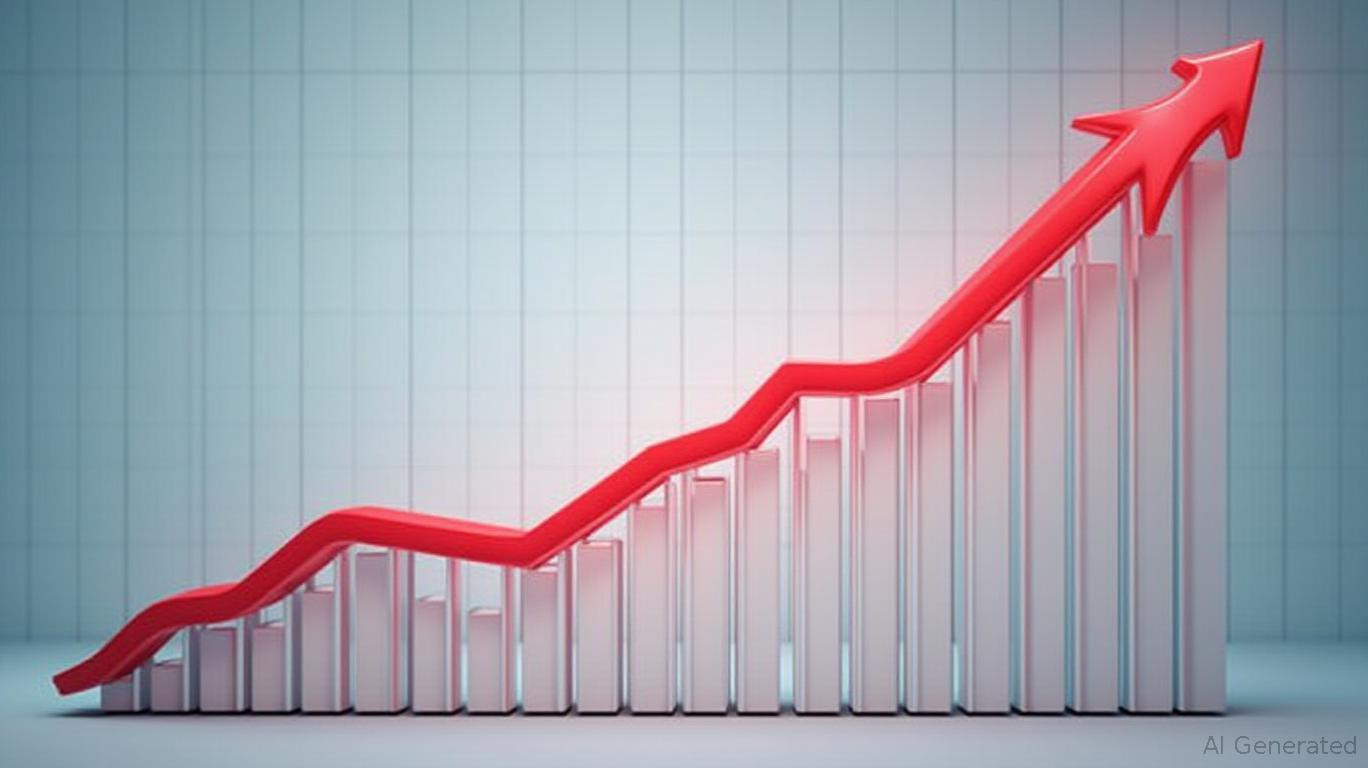Consumer Stocks Under Pressure: Tariffs, Weak Data, and Fed Rate Expectations
The U.S. consumer sector is in the
of a perfect storm: soaring tariffs, weakening demand signals, and the Federal Reserve's uncertain path on interest rates. This trifecta is reshaping opportunities and risks for investors in both consumer discretionary and staples stocks. Let's dissect where to find value—and where to proceed with caution.
The Tariff Tsunami: Who's Sinking? Who's Swimming?
The recent wave of tariffs—especially on automobiles, electronics, and Chinese imports—is a direct hit to consumer discretionary stocks. Automakers like Tesla (TSLA) and Ford (F) face headwinds as tariffs on imported parts and foreign-made vehicles push prices higher. The Budget Lab's analysis estimates auto prices could jump 13.5% this year, crushing demand for big-ticket items.
Why it matters: Higher prices mean fewer sales. Investors in discretionary sectors like autos, appliances, and luxury goods should brace for margin pressure and inventory overhang. The Home Depot (HD) or Lowe's (LOW) could also suffer if home sales slow due to mortgage rate uncertainty.
But not all discretionary stocks are doomed. Companies with pricing power and diversified supply chains—like Amazon (AMZN) or Nike (NKE)—might weather tariffs by absorbing costs or shifting production. Meanwhile, the toy industry, 80% reliant on China, faces a dire outlook. Mattel (MAT)'s stock is already down 20% YTD as tariffs on imports erase profit margins.
Staples: The Last Line of Defense?
Consumer staples—think Procter & Gamble (PG), Coca-Cola (KO), or Kraft Heinz (KHC)—are typically recession-proof. But even these giants face challenges. Input costs for raw materials (plastic, aluminum, food commodities) are spiking due to tariffs and supply chain bottlenecks.
The Federal Reserve Bank of Boston's research warns that tariffs could push core PCE inflation up to 2.2%, squeezing margins. However, staples companies with pricing power can pass costs to consumers. Look for firms with strong brand loyalty and operational flexibility to survive—and even thrive—when shoppers cut back on discretionary spending.
The Fed's Double-Edged Sword
The Fed's potential rate cuts (markets now price a 68% chance of multiple cuts by year-end) could boost consumer discretionary stocks by lowering borrowing costs. But here's the catch: if tariffs remain elevated, rate cuts won't offset the damage from higher prices.
Investors must weigh two scenarios: 1. Tariff easing + rate cuts: A bull market for autos and discretionary stocks. 2. Tariffs stay + no Fed relief: Staples become the only safe haven.
Investment Playbook: Proceed with Caution
- Avoid Auto Stocks Unless There's a Trade Deal:
Tesla (TSLA) and Ford (F) are tied to global supply chains. Buy only if China-U.S. trade talks yield a suspension of auto tariffs.
Rotate to Staples with Pricing Power:
Procter & Gamble (PG) and Coca-Cola (KO) have histories of hiking prices without losing market share. Their dividends are also a cushion in volatile markets.
Beware of the "Tariff Trade" in Discretionary:
Amazon (AMZN) might survive due to scale, but its growth could slow if discretionary spending collapses.
Stay Short-Term on Retail:
- Target (TGT) and Walmart (WMT) are holding up better than peers, but their reliance on imported goods leaves them vulnerable.
Final Take: The Consumer Isn't Dead—But It's Cautious
The consumer sector isn't collapsing, but it's clearly under pressure. Tariffs are reshaping supply chains, inflation is eating into spending power, and the Fed's next move is a wildcard. For now, staples with pricing power are the safest bets, while discretionary plays require patience.
If you're investing here, think of it as a game of inches. Look for companies that can adapt—like shifting production to Mexico under USMCA rules—or have pricing power to offset costs. And above all, stay liquid—because the next shoe to drop could be a major trade deal… or a full-blown tariff war.


Comments
No comments yet